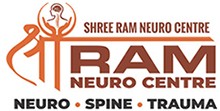Scoliosis is a problem that relates to the curvature of the spine. It develops in early childhood years, or may also be present before birth. Congenital Scoliosis occurs due to the malformation of vertebrae in the embryo. It causes curvature in the spine because there is no uniformity in the growth and lengthening of the vertebrates. The rate and progress depend on the location of the abnormalities within the spine. Since this dysfunctionality is present ever since the fetus develops in the womb, it starts becoming acute and noticeable as the child grows in age and health. Therefore, it becomes detectable at a young age. Idiopathic Scoliosis gets its name from the term Idiopathic, which means ‘no cause’ Ironically, it is the most common type that has a greater tendency of affecting girls than boys. It can target children of any age. Based on age Idiopathic Scoliosis have three classifications. Infantile Idiopathic Scoliosis start showing symptoms within three years from the time of birth. Juvenile idiopathic scoliosis shows up in children between three and nine years of age. Adolescent idiopathic scoliosis affects children between ten and eighteen years of age. The last classification has the highest percentage amongst the other two in pediatric cases. Idiopathic Scoliosis has better chances of healing if it gets detected at an early stage of growth. Neuromuscular scoliosis occurs due to disorder in the nerve or muscular system. Weak and fragile muscular systems fail to give support and strength to nerves and spine that results in developing curves in the spine. Treatment of scoliosis includes therapeutic measures, medications, and spinal fusion surgery. Surgeries aim at straightening the spine using instruments, metal rods, screws, and wires, and they also attempt to strengthen the spine preventing further curves. The spinal fusion surgery solves help in stabilizing the spine curves, balancing the spine and pelvis, restoring the sitting ability, and improving the functionality of the lungs.
Book an Ambulance
ਐਂਬੂਲੈਂਸ ਬੁੱਕ ਕਰੋ
Book an Appointment
ਮੁਲਾਕਾਤ ਬੁੱਕ ਕਰੋ

